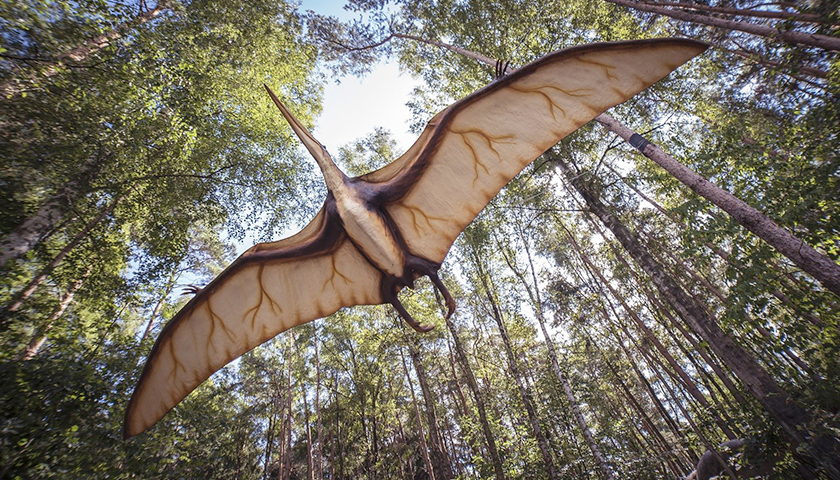by Ross Pomeroy
A new analysis of hatchling pterosaur fossils finds that the flying reptiles which dominated the skies between 228 and 66 million years ago were likely capable of flight within days or even hours after breaking out of their shells.
The study is published in the journal Scientific Reports.
Scientists Darren Naish, Mark P. Witton, and Elizabeth Martin‐Silverstone spearheaded the research. The trio analyzed the wing size and forelimb bending strength of embryonic or recently-hatched specimens from the species Pterodaustro guinazui, one of the best known pterosaurs, with over 750 fossils collected from all growth stages. A sufficient wing size in relation to body size is necessary to keep the animal aloft, and a strong forelimb, specifically the humerus, is required for the animal to initially launch itself into the air.
The researchers found that a pterosaur hatchling’s wing would have been able to keep the animal gliding for thirty meters or farther. Moreover, a hatchling’s humerus seemed to have been very strong in proportion to its bodyweight, even rivaling adults. Though the fossil sample size is small, these two data points strongly favor the notion that pterosaurs hatched ready to fly. This contrasts with their modern-day bird relatives, which are generally born helpless and dependent upon their parents.
The finding is doubly amazing when you consider that P. guinazui hatchlings likely weighed a mere 23 grams, vastly smaller than the 9-kilogram adults. To the authors, this vast size difference suggests that as pterosaurs grew, they might have occupied distinct ecological niches. Hatchlings were likely slower but more maneuverable, and thus might have spent much of their time in forested areas predating on insects. As juveniles, they might have moved out of the trees to more open areas. Later, as small and subsequently giant-sized adults, pterosaurs would have spent more time gliding, traveling long ranges over open ground, hunting larger prey like fish, mammals, or other pterosaurs.
“The concept that pterosaurs were flightworthy from the moment of hatching is not new,” the researchers write, “but is supported here by the first quantified assessment of hatchling pterosaur flight performance and wing strength.”
Some paleontologists previously suggested calling newly-hatched pterosaurs “flaplings.” The results of the current study suggest that adorable moniker is entirely earned.
Source: Darren Naish, Mark P. Witton, & Elizabeth Martin‐Silverstone. Powered flight in hatchling pterosaurs: evidence from wing form and bone strength. Sci Rep 11, 14070 (2021). DOI: 10.1038/s41598-021-92499-z
– – –
Ross Pomeroy is a contributor to RealClearScience.
Photo “Pterosaur” by MaxPixel.





